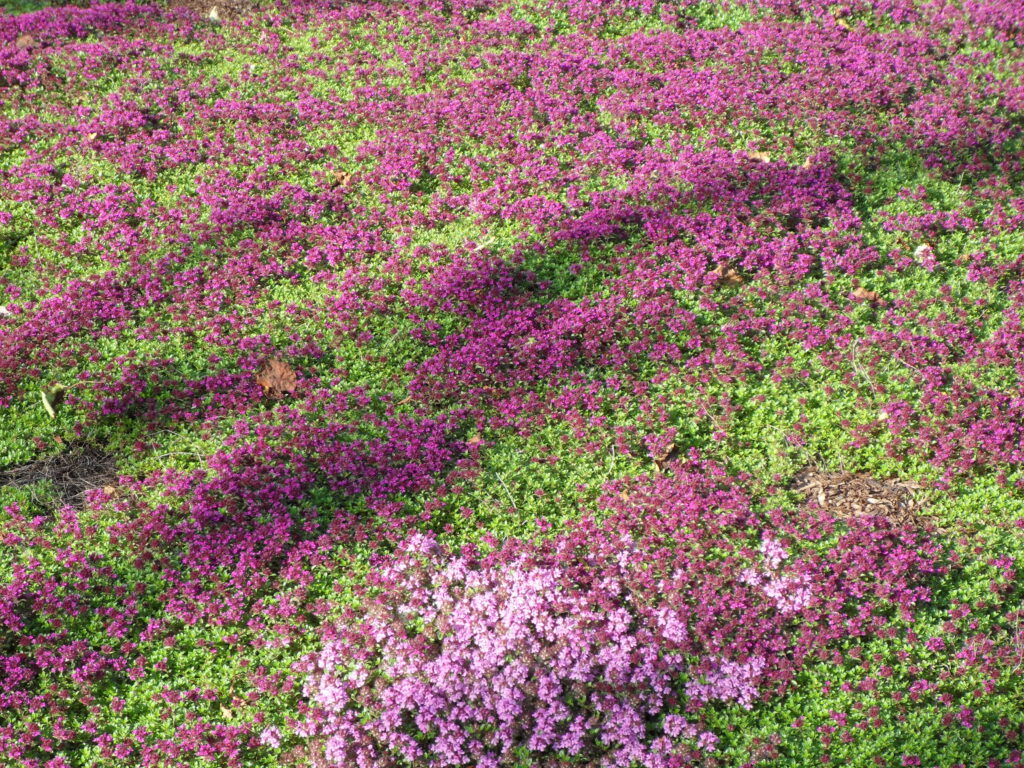
Are you looking for ways to conserve water this summer and still avoid having dry, brown lawn?
In the Maritime Pacific Northwest, it is not only a lack of moisture, but intense heat, that causes a lawn to “brown out.” Given the changing climate and unpredictable weather patterns, now might be a good time to consider alternatives to traditional lawns.
If you like the clean look of a lush, rolling lawn, consider planting a single variety of drought-tolerant ground cover like Red Creeping Thyme (Thymus praecox ‘Coccineus’). Once established, these plants form a dense, fragrant mat, needing only a fraction of the moisture a grass lawn needs to stay green throughout the summer.
Alternatively, you can create a more diverse and colorful look by mixing two or more types of ground cover. Many of these options bloom in late spring or summer, adding seasonal color to your landscape. While some “stepable” ground covers can handle occasional foot traffic, they aren’t suitable for heavily used paths, where stone or pavers would be a better choice.
For a completely different approach, you could transform your lawn into a water-wise landscape using robust plants like lavender, which often thrive with less water than they typically receive in traditional gardens. You can also use plants from drier climates such as the Mediterranean, including grasses, herbs, sedum, and other drought-tolerant perennials.
Another visually appealing option is to incorporate a natural-looking dry riverbed or stone-lined pond, which can be further enhanced with ground covers, grasses, and easy-care perennials.
While these alternatives do require some upkeep to maintain a tidy appearance, they eliminate the need for the weekly mowing, edging, regular watering, and fertilizing that are essential for a green, weed-free lawn in the summer.
If you still want some lawn space for children, pets, or outdoor activities, consider reducing its size and removing any areas that aren’t regularly used. When replanting these areas, remember to choose plants that will complement the surrounding vegetation.
Need more ideas? Contact me for a design consultation to learn about landscape design or how to maximize the impact of the plantings for any spot in your garden.
